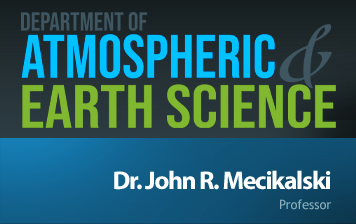Satellite-based Surface Energy Flux/Soil Moisture Estimation
Drought Monitoring: United States, European & Nile River Studies
 Background:
Background:
Examples of how diagnostic ET information at multiple scales are being applied for purposes of drought monitoring, agricultural water resource management, and hydrologic decision support in major river basins. These examples demonstrate recent ALEXI applications using GOES geostationary data over CONUS, and MSG land-surface products over Europe and Africa.
Main Results:
Spatial and temporal variations in instantaneous ET at the continental scale are primarily due to variability in moisture availability (antecedent precipitation), radiative forcing (cloud cover, sun angle), vegetation amount, and local atmospheric conditions such as air temperature, wind speed and vapor pressure deficit. Potential ET describes the evaporation rate expected when soil moisture is non-limiting, ideally capturing response to all other forcing variables. To isolate effects due to spatially varying soil moisture availability, a simple Evaporative Stress Index (ESI) can be developed from the departure of model flux estimates of ET from the potential rate (PET) expected under non-moisture limiting conditions. The ESI reflects temporal anomalies in the ET/PET ratio, and shows good correspondence with standard drought metrics and with patterns of antecedent precipitation, but at significantly higher spatial resolution due to limited reliance on ground observations (Anderson et al. 2007, 2010). This ratio has a value of 1 when there is ample moisture/no stress, and a value of 0 when ET has been cut off due to stress-induced stomatal closure and/or complete drying of the soil surface. It therefore serves as a valuable proxy indicator for available soil moisture (Hain et al. 2009, 2010). Where there is vegetation, the proxy reflects information over the full root zone, while it reflects surface moisture conditions (top 5 cm of soil profile) in areas of very sparse vegetation.
Annual standardized anomalies in several drought indicators are compared, computed from 26-week composites (April-September) over the 2000-2009 growing seasons for CONUS (Anderson et al. 2010). The metrics displayed include anomalies in U.S. Drought Monitor (USDM) drought classifications (Svoboda et al. 2002), the ESI, and three precipitation-based drought indices (the Palmer Z Index, Z; the 3-month Standardized Precipitation Index, SPI-3; and the Palmer Modified Drought Index, PMDI), which were selected to exemplify a range in timescales and modeling approaches. Drought features recorded in the USDM are generally reflected in one or more of the other indices, but to varying degrees depending on drought type and timescale. The hydrologic drought in the western U.S. in 2004 reflects a long-term moisture deficit accumulated from 2002, for example, is not delineated in the 26-week drought index composites shown here. In other years, the ESI successfully reproduces patterns evident in the precipitation indices, indicating the value of the LST signal as a surface moisture proxy. For example, the thermal band inputs to ALEXI capture the major drought events occurring in 2002 and 2007 even in the eastern U.S. where there is dense vegetation cover mid-season, and little exposure of the dry soil surface.
Incorporating the thermal sharpening and data fusion techniques allows for the generation daily time series required to compute ESI anomalies over targeted areas at up to 10-m resolution. This is facilitating drought and crop condition assessments at sub-county to field scales, which will be valuable for yield forecasting and distribution of drought-induced yield loss compensation. Reliable precipitation data at these spatial scales are particularly difficult to obtain, underscoring the value of this kind of diagnostic TIR-based monitoring technique.
Using land-surface temperature, insolation, and leaf area index products developed from MSG imagery by the Land Surface Analysis Satellite Applications Facility (LSA SAF; Trigo et al. 2010), an ALEXI model domain has recently been established over much of Europe. Cut-offs in the northern part of domain through June reflect view angle limitations in the land-surface temperature product through that date. Another 10-km resolution domain has been started over Africa for ET and drought monitoring, with a higher resolution 6-km assessment focused over the Nile River Basin in support of hydrologic modelling. The goal of this project is to combine hydrologic modelling (LDAS) driven by meteorological data from the Global Data Assimilation System (GDAS; Derber et al. 1991) or the European Centre for Medium-Range Weather Forecasts (ECMWF), with remotely sensed ET to provide improved information for water management along the Nile basin. LDAS soil moisture, runoff and ET estimates coupled with routing models will provide streamflow and lake level estimates to be used in a river forecasting system. The remote sensing ET from ALEXI will be used as an independent estimate of water diverted in support of irrigated agriculture within the basin. Employing the data fusion and Landsat thermal-sharpening techniques described above, seasonal estimates of daily ET at the scales approaching that of individual irrigated parcels in heavily agricultural areas, such as in the Nile River Delta. This will provide objective information about how water is being distributed across the complex irrigation networks that have developed along the river basin.

